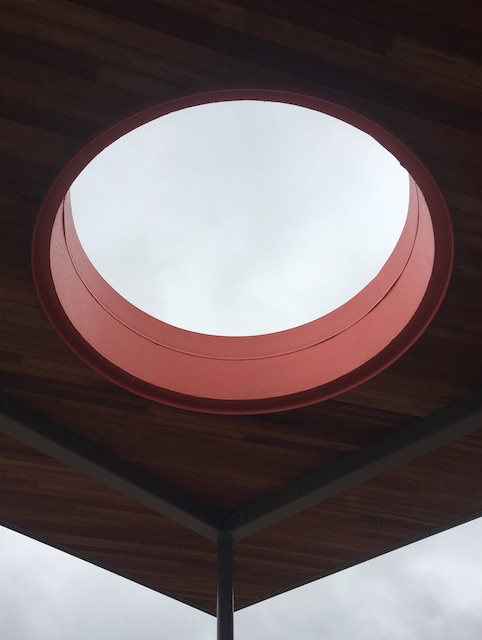I’ve noticed that the word asymmetrical has been appearing in the news recently:
Eye In The Sky Is An Asymmetrical Co-Op VR Puzzle Game Now In Early Access – In this case, asymmetrical is used to mean that that all players do not have access to the same experience within the game. For instance, one player can be working in VR and another not, which means that each person participating in a VR game does not need to have a headset to participate. They can engage with the game in a way that suits what their interest or what they have access to.
I Asked A Car Designer To Try The Hardest Thing In Auto Design – This is an informative piece about the challenges of creating an asymmetrical car design. It appear to work well when designing a car for one person, but not so much for a family car.
Gigi Hadid Hits a Style Home Run in Her Asymmetrical Met Gala Dress – “One part of the asymmetrical dress was off-the-shoulder, while the other side featured a bold shoulder design. And in a similar juxtaposition, the skirt was split into a minidress on one side and a tulle train on the other. To top it all off, Gigi styled the Tommy number with a pair of fishnet tights.” Fashion is one of the first places you can look to see people breaking with convention. I believe that this is due to the speed at which new ideas can be introduced.
Blind fish find food thanks to their twisted heads – Asymmetry gives the fish an advantage in navigation and may be related to the ‘handedness’ of the fish.
Asymmetrical also appears in politics, warfare, and business:
“Asymmetric Politics”: A deep dive into the mysterious puzzle of America’s political divide – The authors, Matt Grossman and David Hopkins, wrote that the Democratic Party “fosters a relatively pragmatic, results-oriented style of politics in which officeholders are rewarded for delivering concrete benefits to targeted groups in order to address specific social problems.” In contrast, the Republicans are more prone to “forge partisan ties based on common ideological beliefs, encouraging party officials to pursue broad rightward shifts in public policy.”
The Incongruities of Asymmetric Warfare – “In the realm of military affairs and national security, asymmetry is acting, organizing, and thinking differently than opponents in order to maximize one’s own advantages, exploit an opponent’s weaknesses, attain the initiative, or gain greater freedom of action.” (See Steven Metz and D. V. Johnson, II, Asymmetry and U.S. Military Strategy: Definition, Background, and Strategic Concepts (Carlisle, PA: Strategic Studies Institute/U.S. Army War College, 2001); and Timothy W. Luke, “Angola and Mozambique: Institutionalizing Social Revolution in Africa,” Review of Politics 44 (July 1982): 413–36.)
Differences in levels of trust and power can affect buyer-supplier performance – Researchers suggest that levels of trust between companies may be an important influence on how they operate and perform. Veronica Villena, an assistant professor of supply chain management, suggests that “it’s not about the level of trust, though. It’s about the asymmetry, or the difference between the levels of trust.”
What else can be asymmetrical?
Information, communication, business models, design, structures, buildings, power, relationships, flags, math, faces, art, encryption, nature, molecules, animals, architecture, and shapes among others.
What are the characteristics of asymmetrical objects?
The Oxford English Dictionary defines asymmetrical as an adjective which means to “have parts which fail to correspond to one another in shape, size, or arrangement; lacking symmetry.” An asymmetrical structure is irregular, imbalanced, and divides into unequal halves.
What makes asymmetry work?
Balance. It is created through offsetting or highlighting other aspects of the design and using the principles of alignment and organization to provide an overall structure. However, when not successfully executed, the design appears glaringly wrong.
Why are people in various industries talking about asymmetry?
It may be the only way that they can respond to customer needs or market forces. Asymmetric solutions are tailored to meet the needs of a specific user, but balances the needs of the many.


